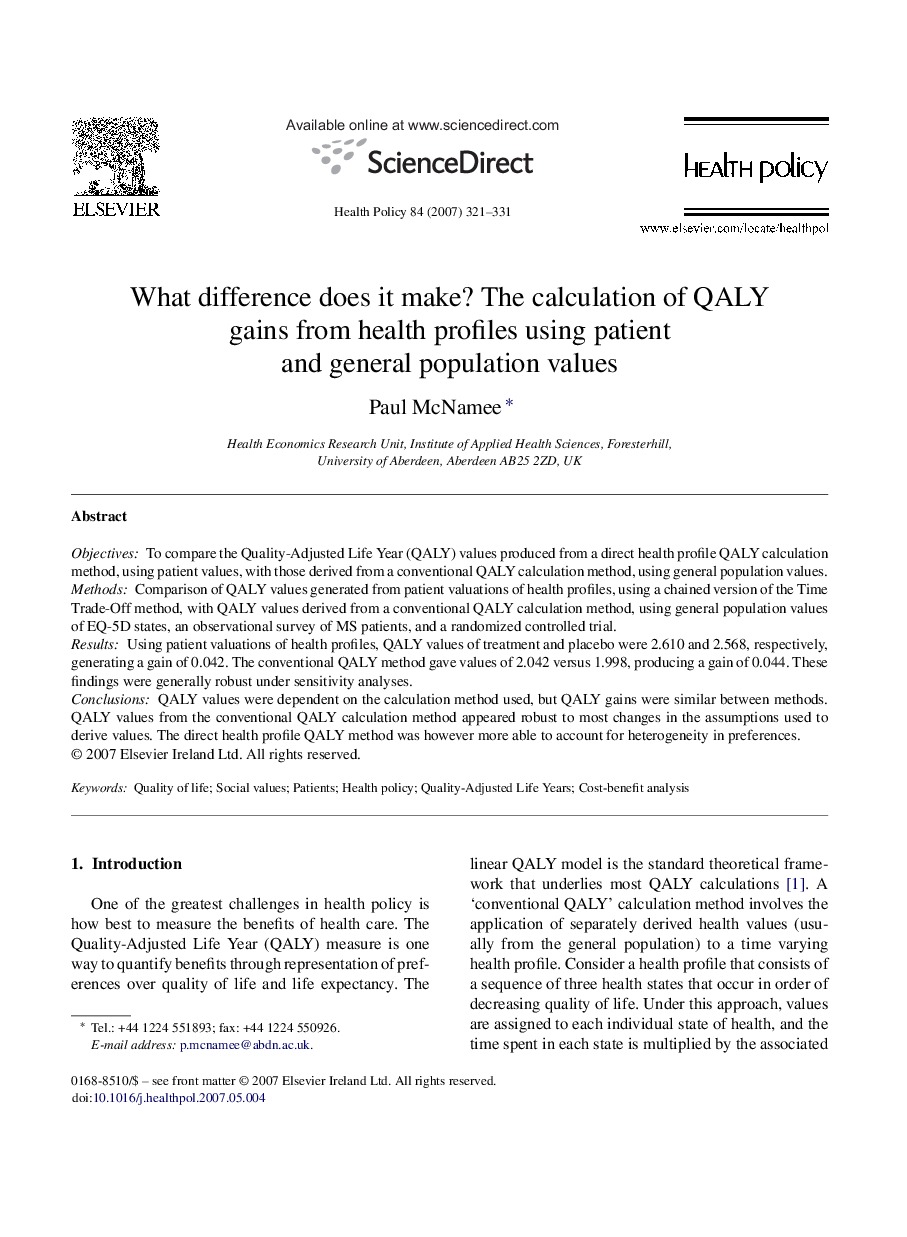| Article ID | Journal | Published Year | Pages | File Type |
|---|---|---|---|---|
| 4198776 | Health Policy | 2007 | 11 Pages |
ObjectivesTo compare the Quality-Adjusted Life Year (QALY) values produced from a direct health profile QALY calculation method, using patient values, with those derived from a conventional QALY calculation method, using general population values.MethodsComparison of QALY values generated from patient valuations of health profiles, using a chained version of the Time Trade-Off method, with QALY values derived from a conventional QALY calculation method, using general population values of EQ-5D states, an observational survey of MS patients, and a randomized controlled trial.ResultsUsing patient valuations of health profiles, QALY values of treatment and placebo were 2.610 and 2.568, respectively, generating a gain of 0.042. The conventional QALY method gave values of 2.042 versus 1.998, producing a gain of 0.044. These findings were generally robust under sensitivity analyses.ConclusionsQALY values were dependent on the calculation method used, but QALY gains were similar between methods. QALY values from the conventional QALY calculation method appeared robust to most changes in the assumptions used to derive values. The direct health profile QALY method was however more able to account for heterogeneity in preferences.
